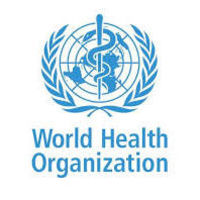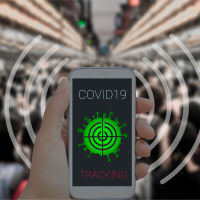Contact tracing has been one of the tools a few governments around the world adopted in their responses to the COVID-19 pandemic, with an impressive amount of resources thrown into the development and implementation of this technology. But will it actually work? Not necessarily, say some experts.
You may also like: Cyber Hackers Exploit COVID-19 Crisis with Healthcare Attacks
While often reported as an efficient mean to curb the spread of the disease, the applications of the contact tracing technologies have been the source of conflicting attitudes across the world. As Prof. Andy Tatem, Professor of Spatial Demography and Epidemiology at the University of Southampton said in his interview with HealthManagement.org The Journal, the contact tracing and surveillance of individuals “can be, on the one hand, a very valuable tool if we are to get out of the lockdowns, but on the other hand, it is bringing up questions about governments tracking our movements.”
This is not the only concern, however. In his blog
post on Healthcare IT News, Dr Saif Abed of AbedGraham notes that technical
discussions on contact-tracing
platforms and apps seem to be
focussed on
centralised (such as in
the UK) vs. decentralised (such as the Google-Apple’s Exposure
Notification) models
for contact tracing while
ignoring other issues.
One is the
minimum number of users who should opt-in – for both uptake and
symptomatic/diagnostic reporting
– for a system to become effective. “Poor adoption could happen for a
number of reasons such as mistrust of how data will be used but also simply
because people don’t have smartphones or are not comfortable downloading apps,”
Dr Abed writes. IDG Insider Pro’s Mike Elgan echoes this concern in his piece
on Exposure Notification, pointing out that the majority of people would not
care to even download the app. Moreover, other countries, such Singapore,
France, Australia to name a few, have rolled out and are set to use their own
national apps.
Elgan also highlights that contact tracing is incapable of
tracing all the ways people get the virus, such as touching contaminated
surfaces, using public transport or even interacting with their children who
got infected by their friends.
For these systems to deliver results, they must share their
data and be interoperable with central and local health IT systems to allow for
statistical analysis, outbreak mapping, capacity management and early clinical
intervention for higher risk groups, notes Dr Abed. This, however, opens up
enormous vulnerabilities in the face of cyber attacks, which have been on the
rise since the start of the pandemic, especially in healthcare. Adding to this
is the tremendous growth in telehealth services due to COVID-19, which likely
need to have an interface with contact tracing platforms and thus are also attractive
attack targets.
Contact tracing will also be useless unless there is frequent and universal
testing in place, continues Elgan, but “in the
foreseeable future [testing] will be inaccurate, slow, unevenly applied and
rare” in the U.S. He notes that even on the number of tests needed there is
still no consensus. Same seems to be true for the EU. According to HealthManagement.org
EXEC Editor-in-Chief Alexandre Lourenço, testing policies in Europe depend
heavily on the availability of tests – and only countries with production
capabilities, such as Germany, can afford to implement broader testing
policies, simply because they are capable of producing enough tests.
Among other
concerns aired by the experts are, for example, contact-tracing
apps’ dependency on Bluetooth-based proximity or, as is the case with the
Google-Apple’s app, one-level
contact notification,
meaning that only those who had been in contact with an infected person would
be notified, but not the ones they themselves had been in contact with.
Europe TCP on Contact Tracing
Meanwhile, the Association for Computing Machinery’s (ACM) Europe Technology Policy Committee (Europe TPC) has outlined principles and practices for the development and deployment of contact tracing technology for COVID-19.
In a statement,
Europe TCP stresses that such systems should, by technical and legal design, “respect
and protect the rights of all individuals; safeguard personal data and privacy
to the highest degree technically possible; and [be] subject to scrutiny by the
scientific community and civil society before, during and after
deployment."
The
outline concerns five critical areas of policy: technical architecture,
development transparency, expert oversight, legal safeguards and public
engagement. It suggests that all contact tracing platforms should be used voluntary
(individual opt-in); interoperable on an international scale; developed as open
source; legally limited in their use and data collection; and available for
formal comment with respect to citizens’ rights and the ‘digital divide.’
Overall, concludes Dr Abed, contact tracing technologies
development and implementation should involve interdisciplinary teams “of
clinicians, epidemiologists, technical security experts and privacy advocates.”
Simultaneously, extensive media coverage would help to educate and engage the
public and, as a result, to enhance adoption.
Image
credit: metamorworks
via iStock



























